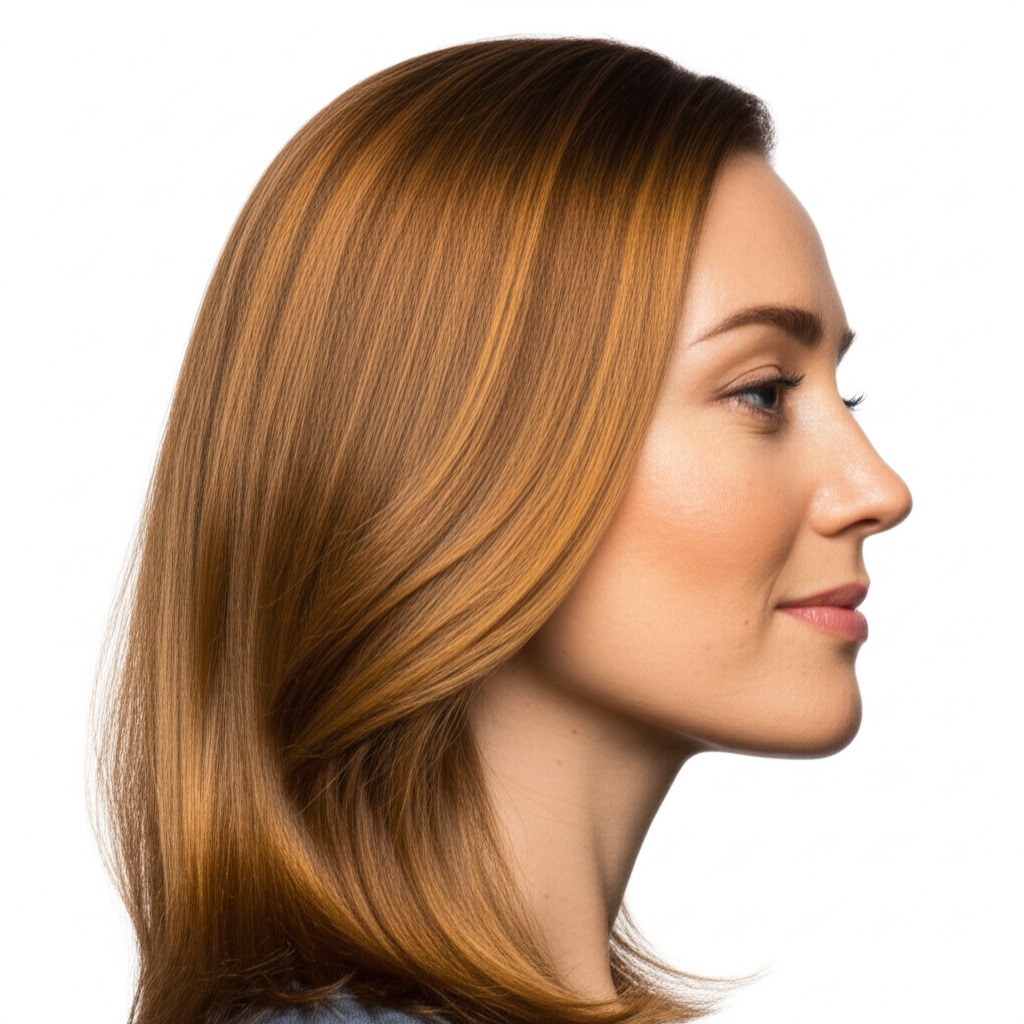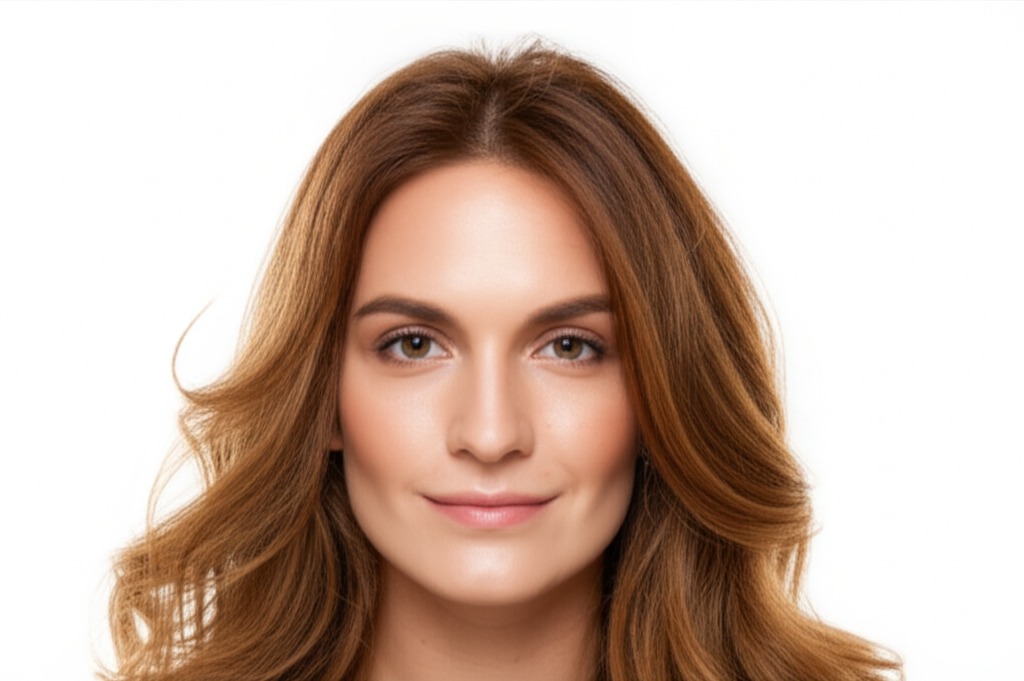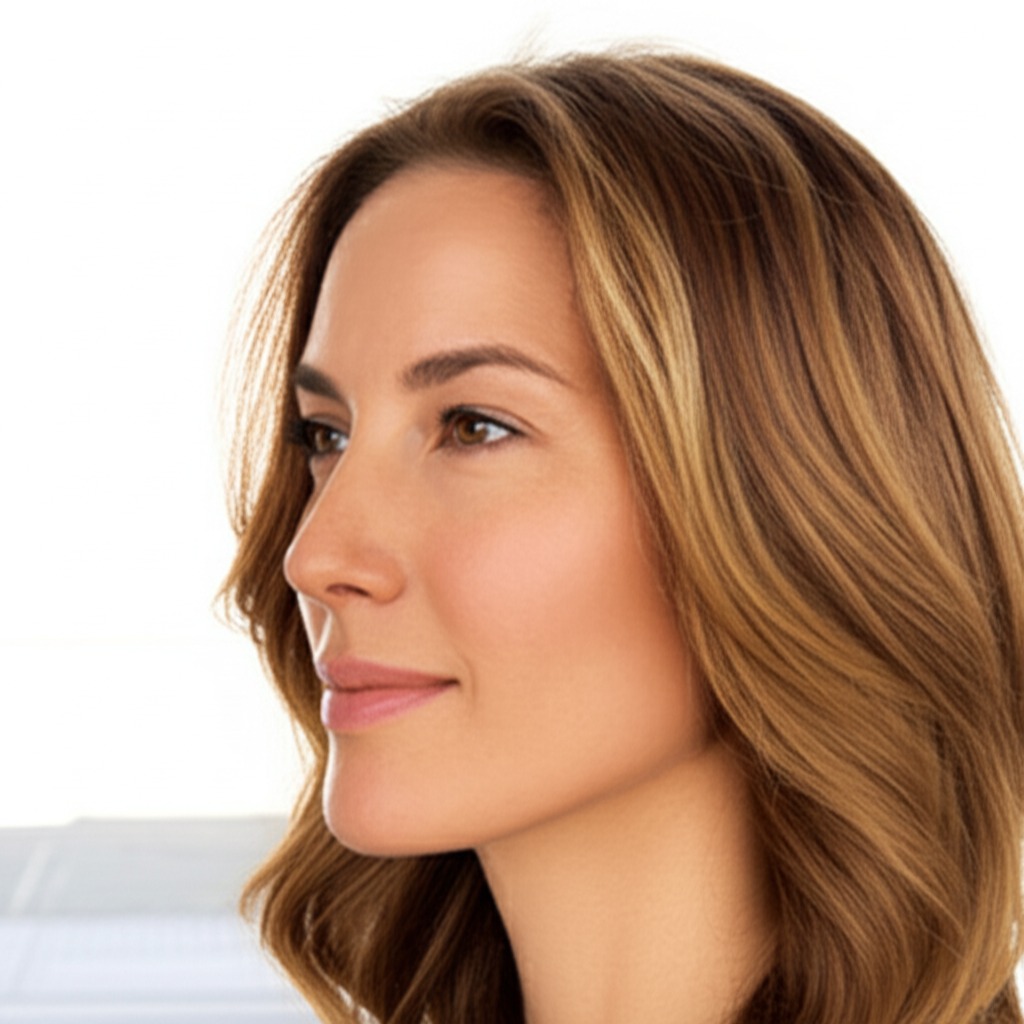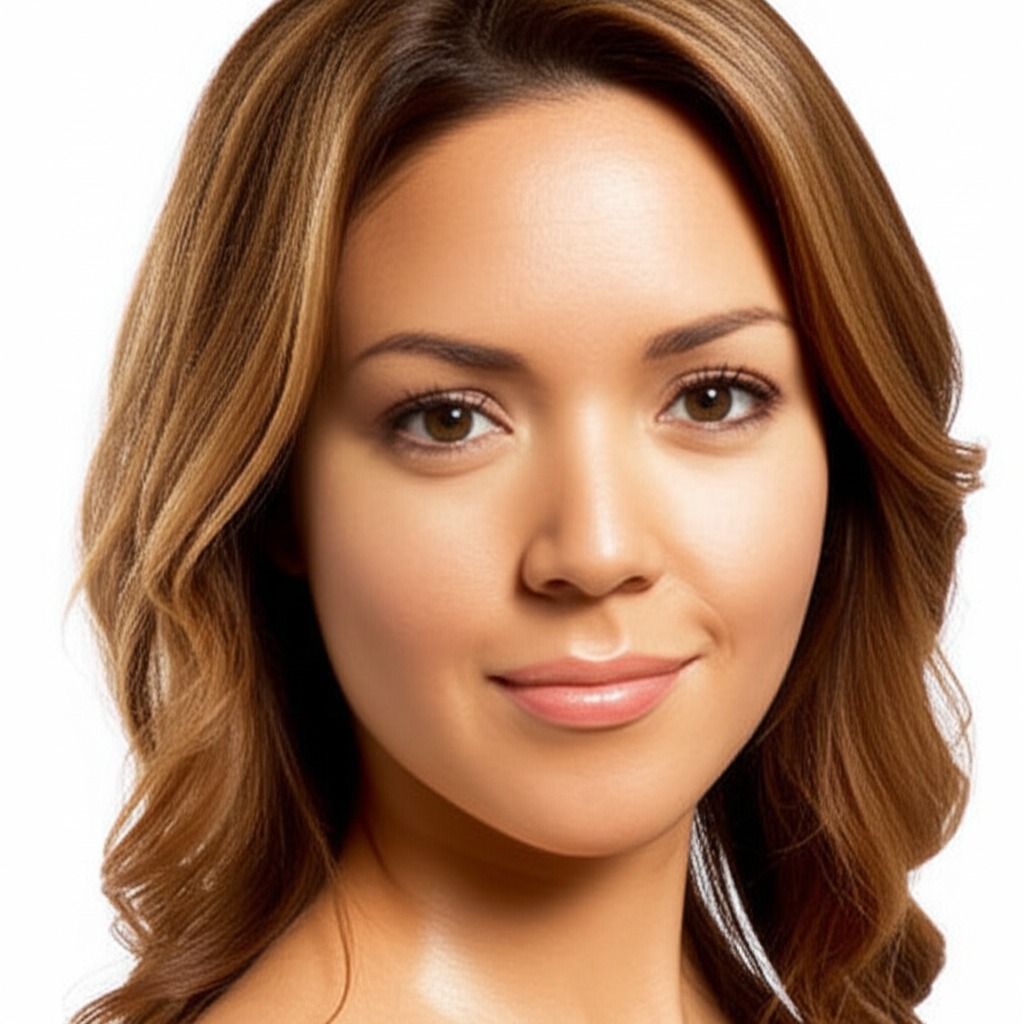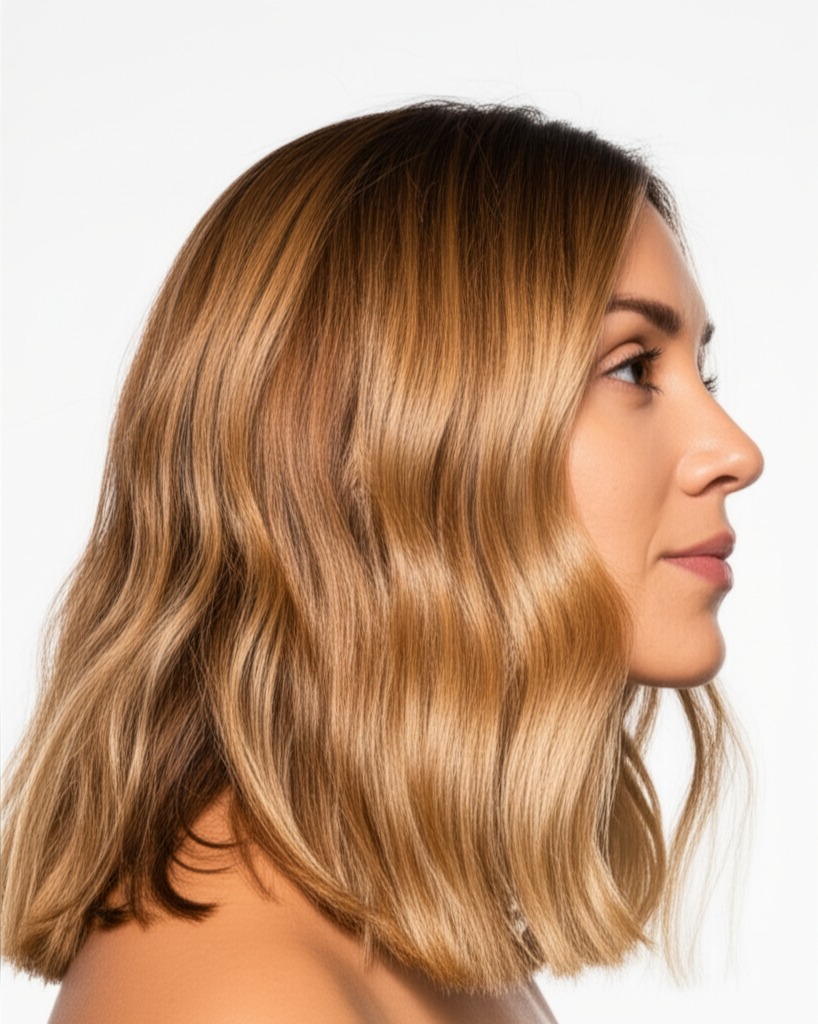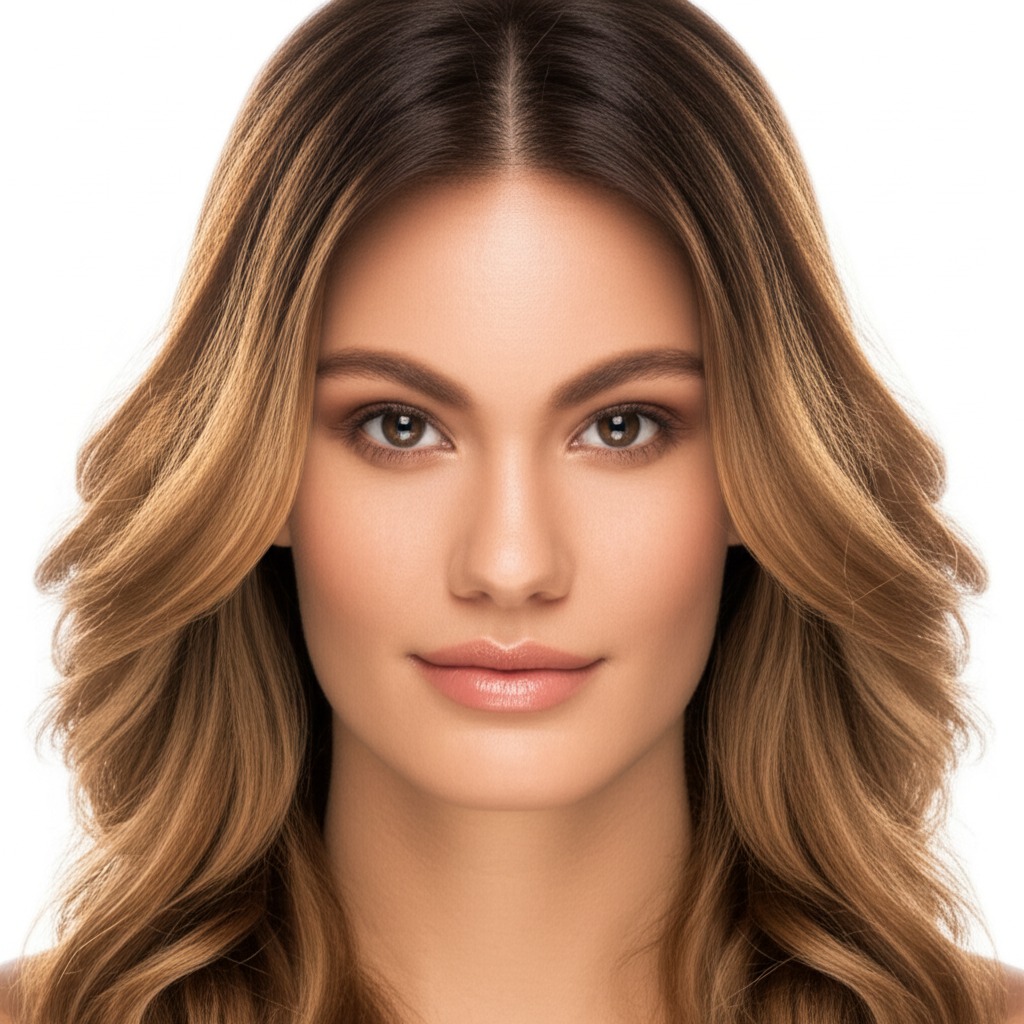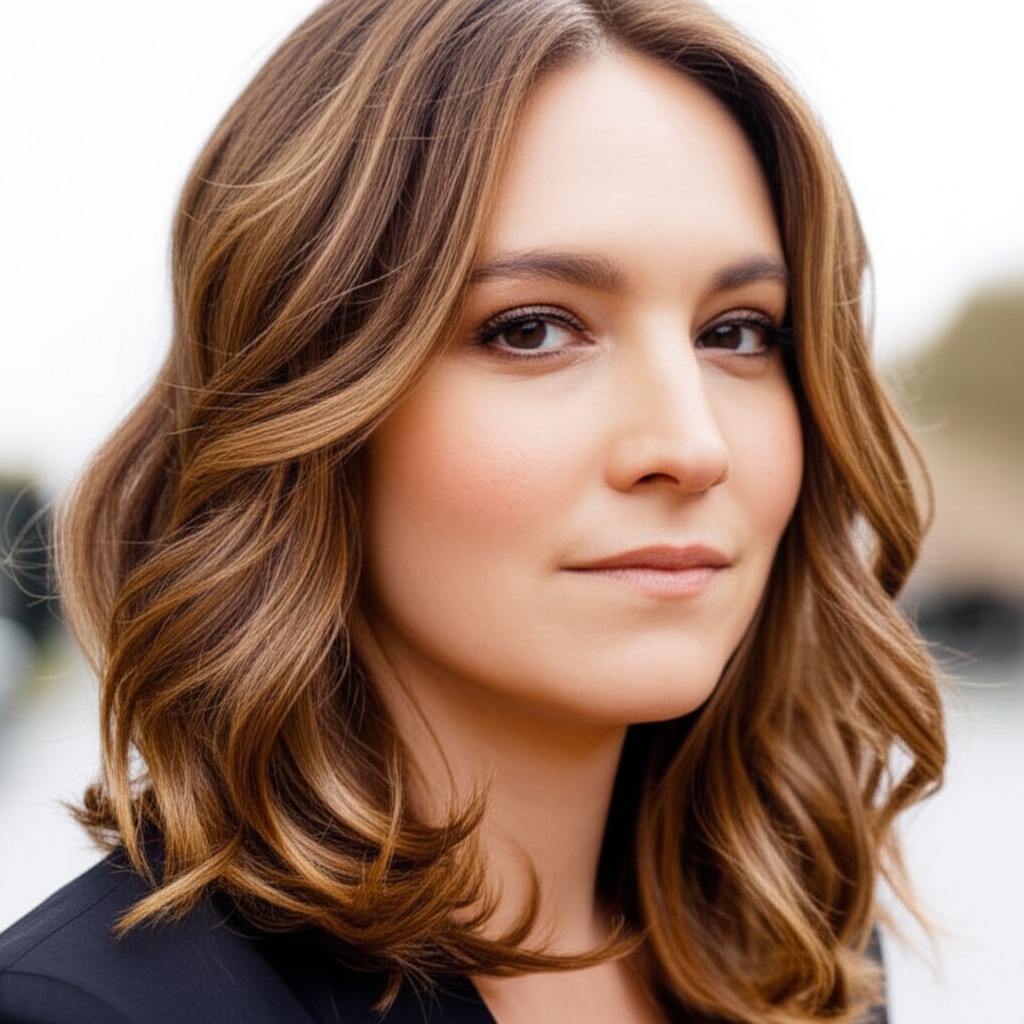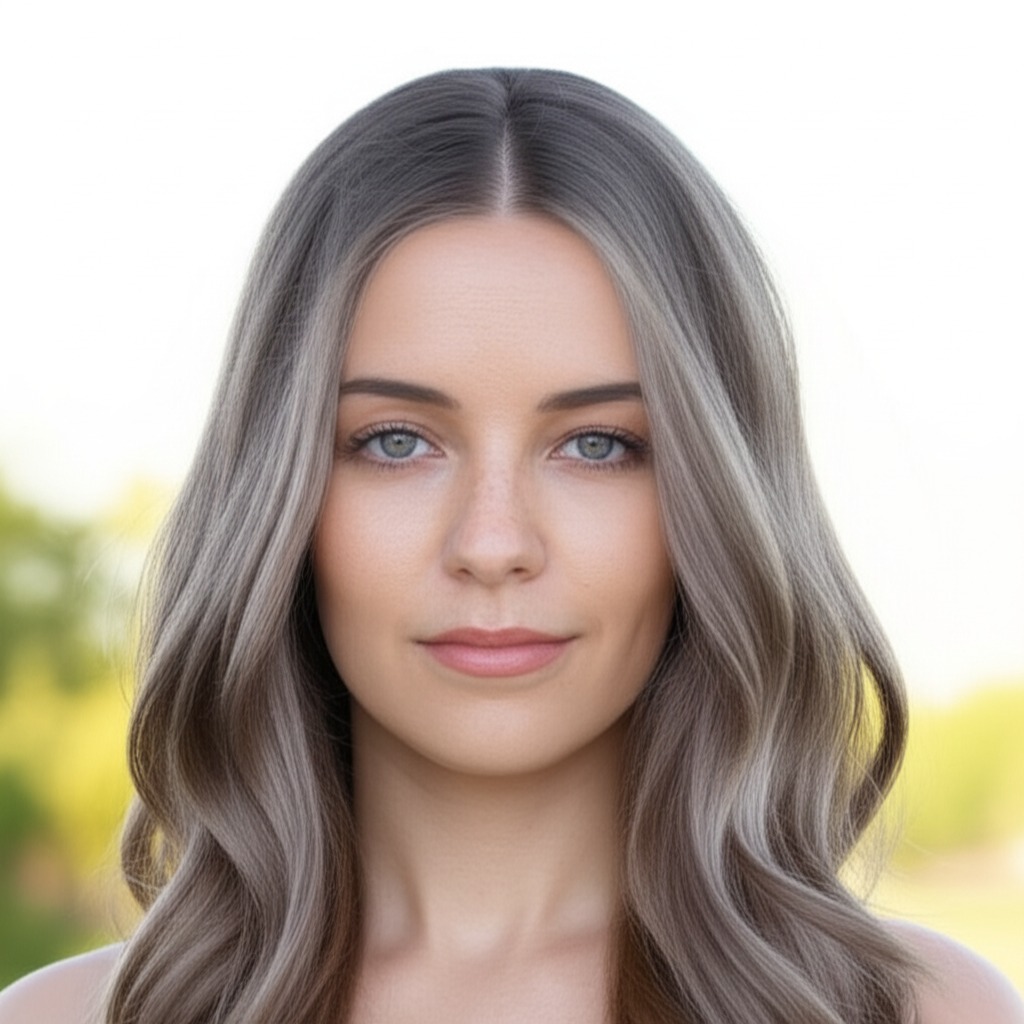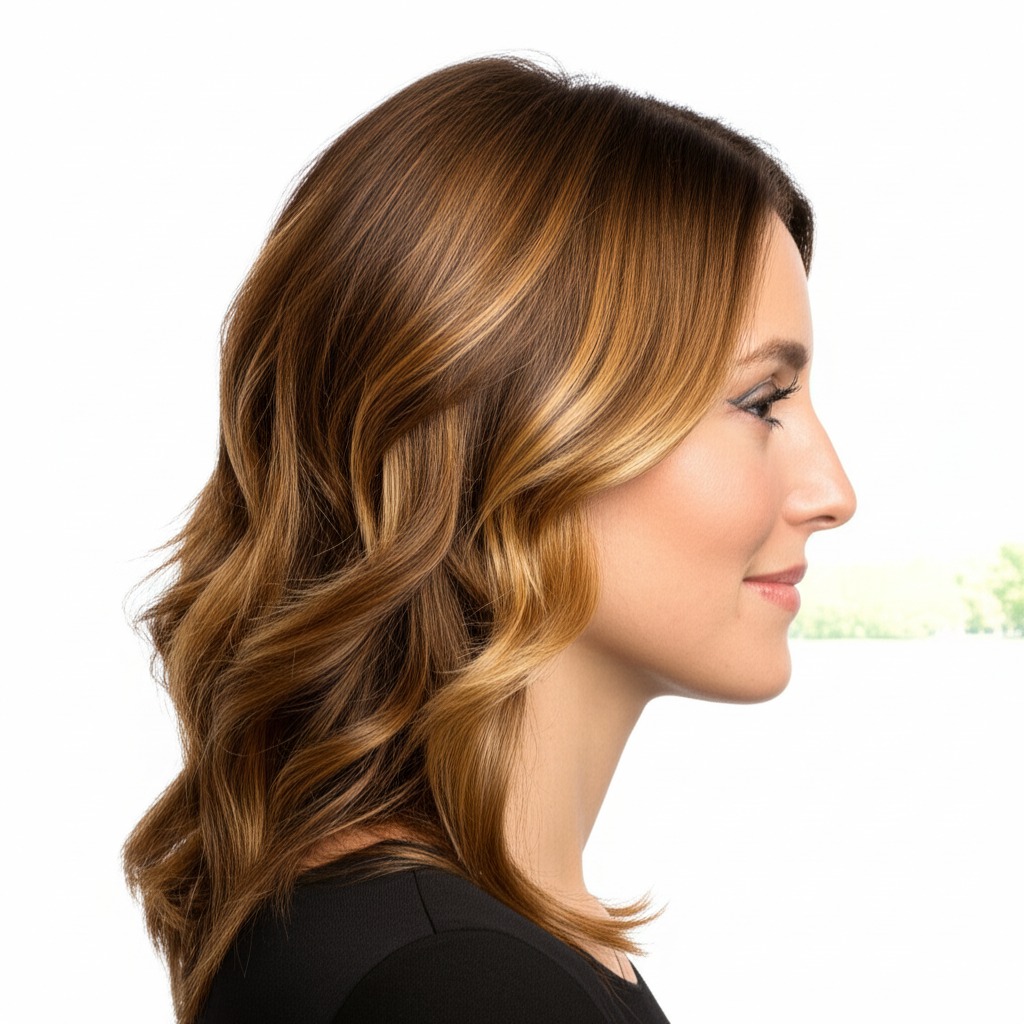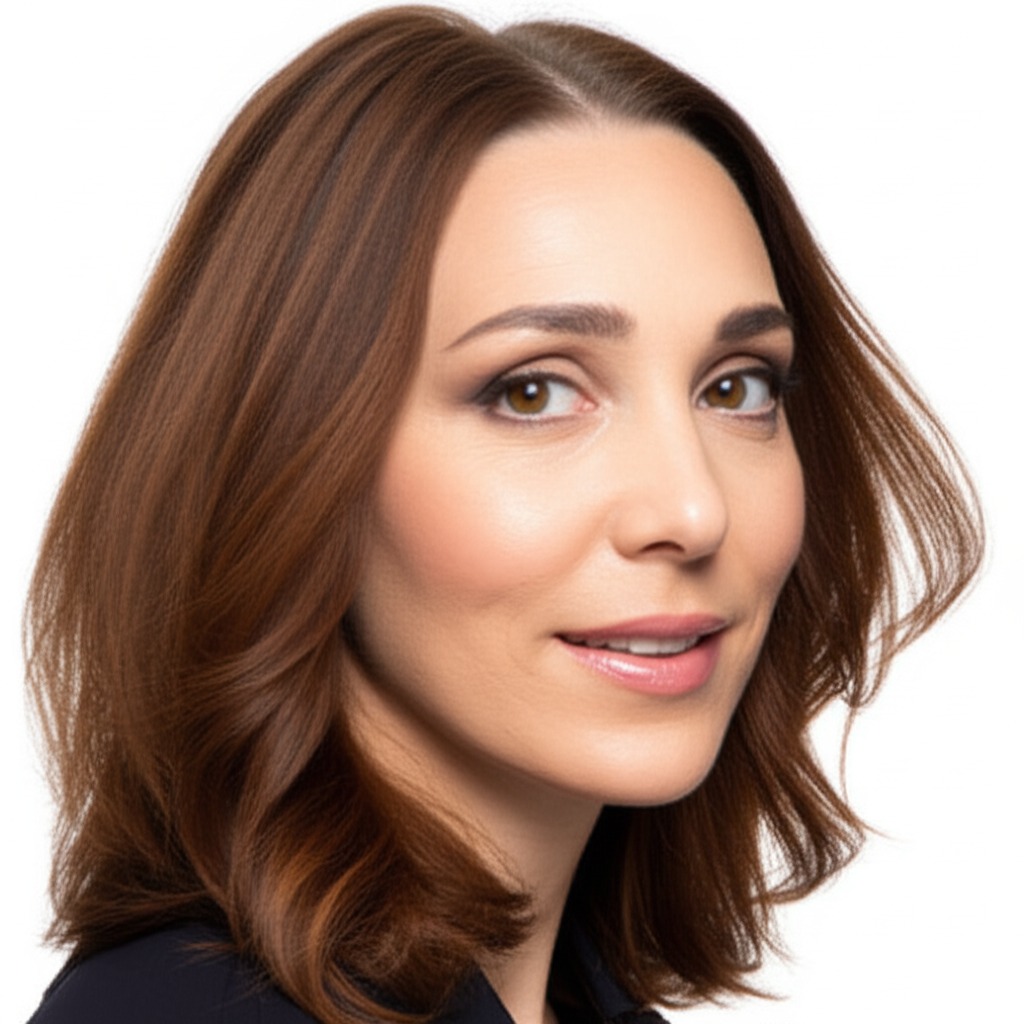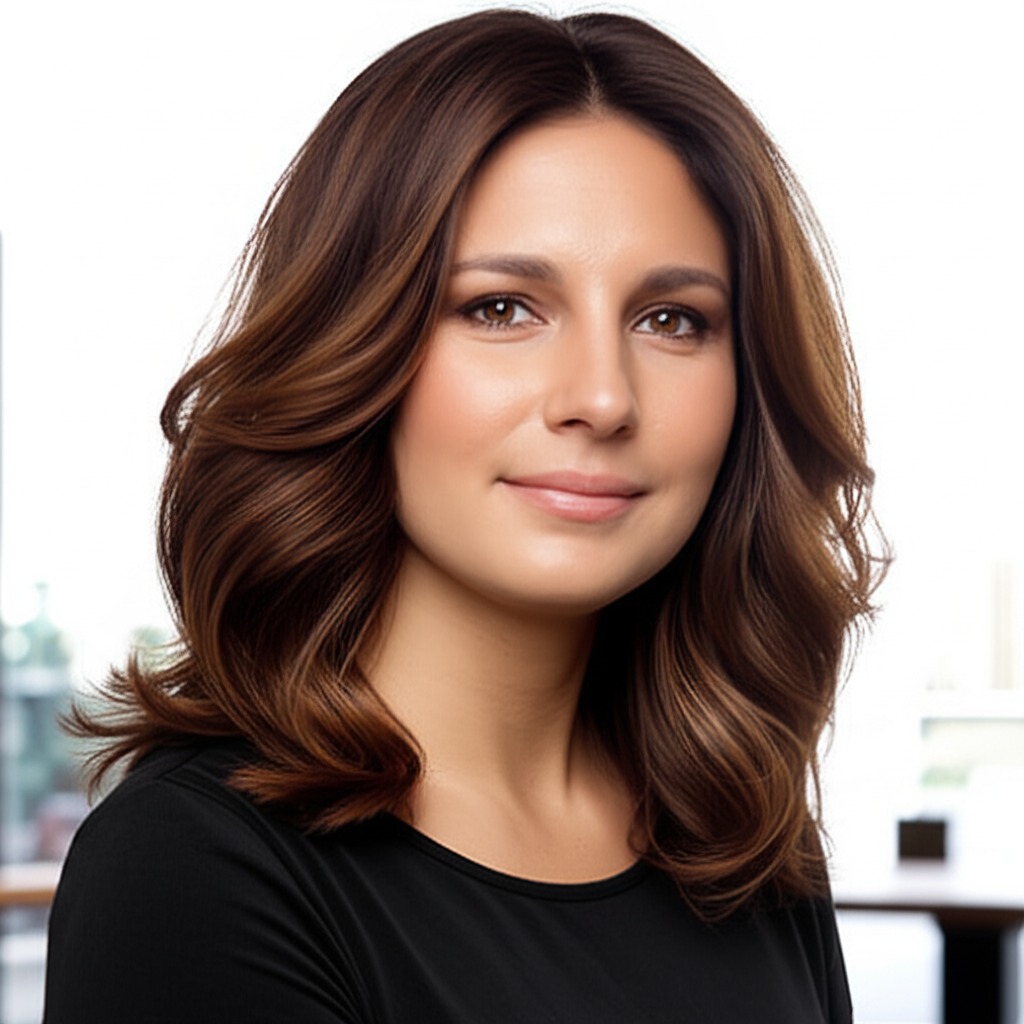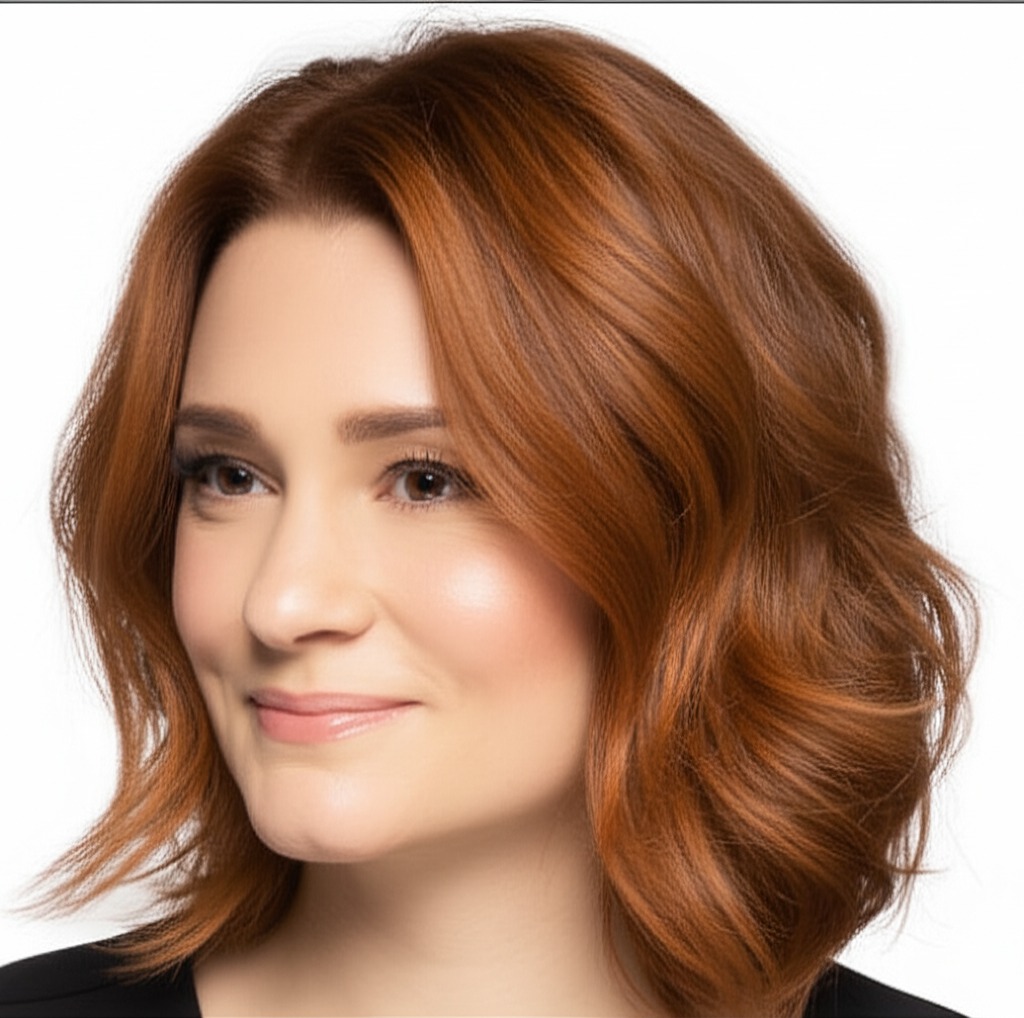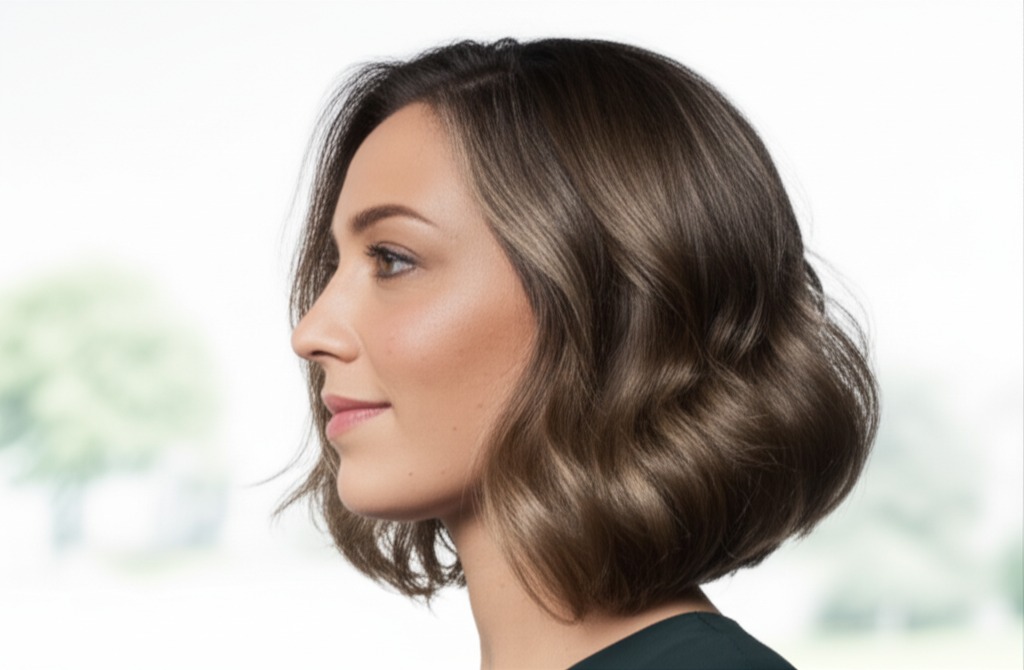#Honey Brown Hair Color: A Sweet Guide to Warm Radiance
Honey brown is a universally flattering hair color that evokes feelings of warmth, sunshine, and natural beauty. It’s more than just “brown” – it's a complex shade with incredible depth and versatility. This guide will break down everything you need to know about achieving and maintaining this gorgeous look, whether you're considering your first color change or looking for a fresh update.
#1. Defining Honey Brown: Undertones & Levels
Honey brown isn’t one single color; it’s a family of shades! Understanding its components is key.
- Undertone: The defining characteristic of honey brown is its warm undertone. This means hints of gold, caramel, or even copper peek through the base brown. It's this warmth that gives it that “honey” glow. While predominantly warm, a skilled colorist can adjust for slightly neutral tones depending on your skin tone (more on that later).
- Depth/Levels: Hair color is measured using a level system. 1 is black, and 10 is the lightest blonde. Honey brown typically sits between levels 4-7. Here’s how those levels translate:
- Level 4-5 (Darker Honey Brown): Rich, deep honey tones – great for adding warmth to darker bases.
- Level 6 (Mid-Range Honey Brown): The most common and versatile honey brown shade. It offers a good balance of depth and brightness.
- Level 7 (Lighter Honey Brown): A brighter, more golden honey tone – best for those with lighter starting levels or who want a noticeable lift.
#2. Who Does Honey Brown Flatter?
Honey brown’s warmth is generally flattering, but here's how to tailor it to you:
- Skin Tone & Undertone:
- Warm Skin Tones (yellow/golden undertones): This is your winning combination! The warm honey tones will enhance your natural radiance.
- Neutral Skin Tones: Honey brown works beautifully, but a colorist might slightly adjust the warmth to ensure it complements rather than overpowers.
- Cool Skin Tones (pink/blue undertones): Can still work! A more muted or "dusty" honey – less intensely golden – is best to avoid clashing with your skin’s coolness. A skilled colorist can achieve this by adding a touch of ash-brown.
- Eye Color: Honey brown enhances almost every eye color:
- Brown Eyes: Makes them appear even richer and more expressive.
- Green Eyes: The warmth brings out the green's vibrancy.
- Blue/Gray Eyes: Creates a beautiful contrast, making your eyes pop.
- Natural Level Starting Point: This is crucial!
- Levels 1-3 (Dark Brown to Black): Requires significant lightening and will involve more processing time in the salon.
- Levels 4-6 (Medium Brown): The easiest transition – honey brown can be achieved with minimal lifting.
- Levels 7-9 (Light Brown to Dark Blonde): Honey brown can act as a toner or gloss, deepening and warming existing lighter tones.
#3. Technique Options: From Subtle to Statement
How you apply the color dramatically impacts the final result.
- Single Process: A uniform application of honey brown all over – great for covering grays or achieving a solid base color.
- Highlights/Lowlights: Adding highlights (lighter pieces) creates dimension and brightness. Lowlights (darker pieces) add depth and contrast. Golden-honey highlights are classic!
- Babylights: Very fine, subtle highlights that mimic the natural sun-kissed effect of childhood hair. They’re low maintenance and create a soft, blended look.
- Gloss/Toner: A semi-permanent color deposit used to enhance existing tones or correct unwanted hues (like brassiness). A honey gloss adds warmth and shine.
- Balayage-Effect vs Solid: Balayage involves hand-painted highlights for a softer, more natural transition than traditional foil highlighting. It's great for achieving that "lived-in" look. A solid application gives an even tone.
#4. Maintenance & Longevity: Planning Ahead
Honey brown is relatively low maintenance if you plan ahead!
- Wash Frequency: Aim to wash your hair 2-3 times per week with a color-safe shampoo and conditioner (see at-home care section).
- Toner Refresh: Glosses/toners typically last 4-8 weeks. Schedule a refresh appointment to maintain the honey tone and prevent brassiness.
- Root Growth Pacing: With highlights or balayage, root regrowth is less noticeable than with solid color. Discuss your desired grow-out look with your stylist – they can strategically place highlights to blend seamlessly.
- Budget/Time Planning:
- Single Process: Moderate cost and time (around 2-3 hours).
- Highlights/Balayage: Higher cost and longer appointment (3-5+ hours, potentially multiple sessions for significant lightening).
#5. Seasonality & Pairing with Cuts: Styling Considerations
Honey brown’s warmth makes it adaptable to different seasons and styles.
- Cuts: It looks fantastic with almost any cut!
- Bob/Lob: Adds a playful, modern vibe.
- Long Layers: Creates movement and dimension – perfect for showcasing highlights.
- Pixie Cut: A bolder choice that emphasizes the warmth and texture of the hair.
- Seasonal Tweaks:
- Fall/Winter: Deeper, richer honey tones feel cozy and inviting.
- Spring/Summer: Lighter, brighter honey shades evoke a sun-kissed glow.
- Event Occasions:
- Work: A more subtle, natural honey brown is professional and polished.
- Daytime: A bright, golden honey tone radiates warmth and confidence.
- Evening: Richer, deeper honey tones with highlights add glamour and dimension.
- Weddings: Honey brown complements a variety of wedding aesthetics – from rustic to modern.
#6. At-Home Care: Protecting Your Investment
Proper care is essential for maintaining your honey brown color.
- Sulfate-Free Shampoo & Conditioner: Sulfates strip hair of its natural oils and fade color quickly.
- Clarifying Cadence: Use a clarifying shampoo (once a month or less) to remove buildup, but follow with a deep conditioning mask.
- Heat Protection: Always use heat protectant spray before using styling tools like blow dryers, straighteners, or curling irons.
- Color-Safe Styling Tips: Avoid harsh chemicals and excessive sun exposure. Rinse hair with cool water to seal the cuticle and lock in color.
- Product Checklist: Sulfate-free shampoo & conditioner, deep conditioning mask, heat protectant spray, leave-in conditioner (especially for curly/coily textures).
#7. Common Pitfalls: Prevention is Key
- Brassiness: Warm tones can oxidize over time and become brassy. Use a purple shampoo or toner to neutralize yellow/orange pigments.
- Banding: Uneven color application, often caused by improper technique or product buildup. A skilled stylist will ensure even saturation.
- Patchiness: Can occur with at-home coloring if the formula isn't mixed correctly or applied evenly. Professional application is recommended for significant changes.
#8. Pros & Cons: Weighing Your Options
Pros:
- Versatile & Flattering: Suits a wide range of skin tones and eye colors.
- Warm & Radiant: Adds dimension and vibrancy to hair.
- Relatively Low Maintenance (with proper care).
Cons:
- Fading Potential: Warm tones tend to fade faster than cooler tones, requiring more frequent toner refreshes.
- Maintenance Burden: Regular salon visits are needed for highlights/balayage or glosses.
- Significant Processing Time: Achieving honey brown on darker bases can take several hours and multiple sessions.
#9. Salon Consultation Script: Setting Expectations
Prepare for your appointment with these questions to ask your stylist:
- "What level of honey brown would best suit my skin tone and natural hair color?"
- "Can you show me examples of different honey brown techniques (single process, balayage, highlights)?"
- “How long will the coloring process take?”
- “What is the estimated cost for this service?”
- "What at-home care products do you recommend to maintain my color and hair health?"
- "How often should I schedule toner/color refresh appointments?"
#10. FAQs: Your Burning Questions Answered
- Can I achieve honey brown on black box dye? Yes, but it will require multiple sessions and significant lightening, potentially damaging your hair. Be prepared for a longer process and higher cost.
- Will honey brown make my face look orange? Not if applied correctly! A skilled stylist will adjust the tone to complement your skin tone.
- How long does honey brown last? The base color can last several weeks, but highlights/toners typically fade within 4-8 weeks.
- Can I do honey brown at home? While possible, it's risky without experience and the right tools. Professional application is recommended for best results.
- Is purple shampoo necessary for honey brown hair? It’s highly recommended to neutralize brassiness and maintain the golden tones.
- Will my roots be noticeable as they grow out with highlights/balayage? Strategically placed highlights minimize root visibility, creating a softer transition.
Enjoy your journey towards radiant, honey-kissed locks!
